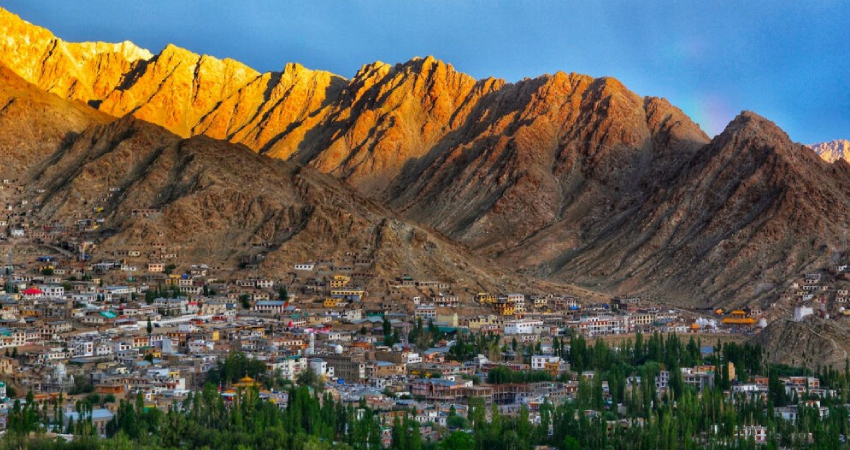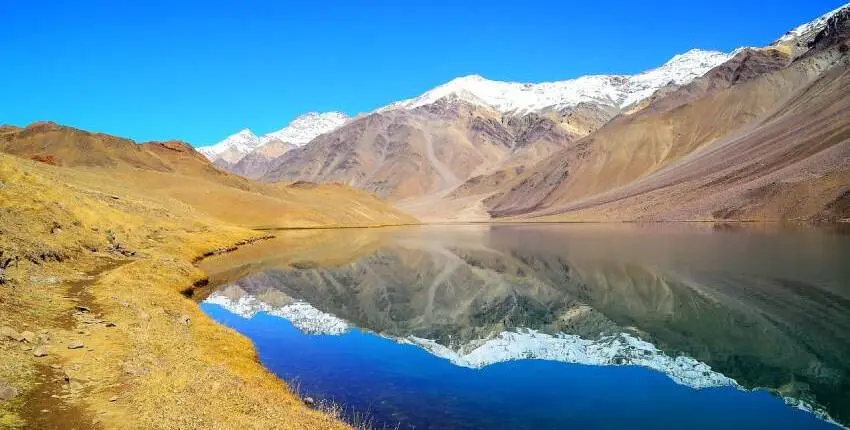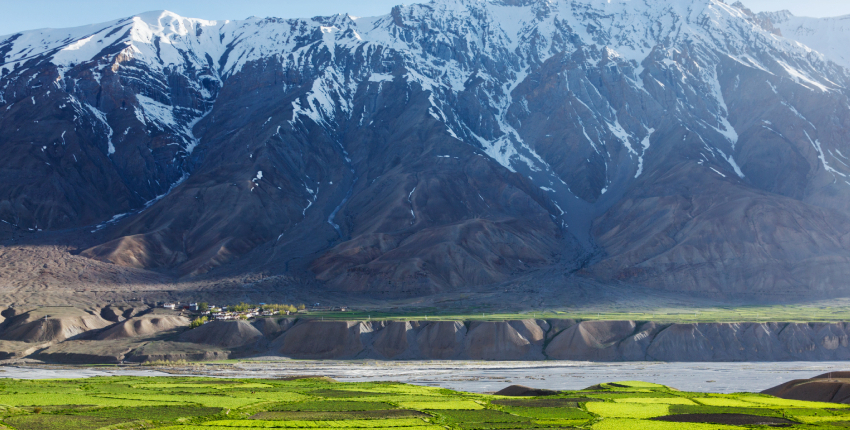
Spiti Valley, a remote and rugged region in Himachal Pradesh, India, is a paradise for adventure seekers and nature lovers. If you’re planning a trip to Spiti Valley in 2025, you’re in for an unforgettable experience. With its growing reputation as a hub for adventure, spirituality, and eco-conscious travel, Spiti offers something unique for every kind of traveler. In this article, we’ll provide you with a detailed Spiti Valley Circuit tour plan, including itineraries from Chandigarh and Shimla. Let’s get started!
Why Visit Spiti Valley?
Before we dive into the tour plan, let’s discuss why Spiti Valley is a must-visit destination.Spiti Valley is a remote and isolated region in the Himalayas, known for its untouched natural beauty, Buddhist culture, and rugged landscapes. In recent years, it has gained popularity as an eco-tourism destination, with travelers increasingly drawn to its sustainable tourism initiatives and efforts to preserve its pristine environment.

Spiti Valley is a perfect destination for those who love adventure, nature, and culture. Whether you’re a seasoned traveler or a first-time tourist, Spiti Valley has something for everyone.
Getting to Spiti Valley
Before we begin with the itineraries, it’s essential to know how to reach Spiti Valley. The closest major city to Spiti Valley is Shimla, which is well-connected to major cities in India by air, train, and road. Additionally, new helicopter services between Shimla and Kaza have been introduced in 2024, offering a faster and more scenic route for travelers.
If you’re coming from Shimla, you can take a bus or taxi to Kaza, the headquarters of Spiti Valley. The distance from Shimla to Kaza is around 415 km, and the journey takes around 15-17 hours. But you won’t be taking a direct one day journey to Kaza. That’s not the point of going to Spiti and Kaza.
Spiti Tour Itinerary from Chandigarh

Here’s a detailed 8-day Chandigarh-Spiti-Chandigarh itinerary for 2025, designed for a balanced mix of cultural immersion, adventure, and acclimatization. This plan avoids backtracking by creating a loop via Shimla and Manali, leveraging the Atal Tunnel for faster returns:
Day 1: Chandigarh → Shimla (110 km / 3–4 hrs)
Start early from Chandigarh, driving through the Himalayan foothills to Shimla. Check into a heritage property like Oberoi Cecil or a cozy homestay. Spend the afternoon strolling the Ridge and Mall Road, soaking in colonial architecture. Visit Christ Church and enjoy sunset views from Jakhu Temple. Savor Himachali cuisine at Wake & Bake Café or Indian Coffee House. Shimla’s moderate altitude (2,200 m) eases you into the mountains.
Day 2: Shimla → Sarahan (160 km / 5–6 hrs)
Drive through apple orchards and pine forests to Sarahan, a serene village in Kinnaur. Stop at Narkanda for views of Hatu Peak (3,400 m) and visit the Tanni Jubbar Lake. In Sarahan, explore the UNESCO-listed Bhima Kali Temple, a marvel of wood-carved architecture. Stay overnight at a heritage homestay, trying local dishes like siddu (steamed bread) and chana madra.
Day 3: Sarahan → Kalpa (100 km / 4–5 hrs)
Follow the Sutlej River to Kalpa, a tranquil town facing the Kinner Kailash Peak. En route, explore Roghi Village, famous for its hanging rock formations. In Kalpa, visit the Recong Peo Market for Kinnauri shawls and dried apricots. Relax with sunset views of the Himalayas from your hotel. Kalpa’s elevation (2,960 m) prepares you for higher altitudes.
Day 4: Kalpa → Kaza (230 km / 8–9 hrs)
Enter Spiti Valley via NH505, stopping at Nako Lake for photos and Gue Village to see the 500-year-old mummy of Lama Sangha Tenzin. Visit Tabo Monastery, a 1,000-year-old UNESCO site with ancient murals. Arrive in Kaza by evening and check into Zostel Kaza or a homestay. Enjoy thukpa (noodle soup) and butter tea for dinner.
Day 5: Kaza & Key Monastery Exploration
Explore Spiti’s cultural heart:
- Key Monastery: Hike to this 1,000-year-old cliffside monastery for panoramic valley views.
- Kibber Village (4,270 m): Walk through the once “world’s highest motorable village.”
- Chicham Bridge: Cross Asia’s highest suspension bridge (4,200 m).
- Hikkim: Send a postcard from the world’s highest post office.
Return to Kaza for dinner at Sol Café (vegan-friendly) and stargazing.

Day 6: Day Trip to Pin Valley & Dhankar
Drive to Pin Valley National Park, stopping at Mudh Village, the gateway to the Pin Parvati Pass trek. Explore traditional Spitian homes in Sagnam. Return via Dhankar Village for a 1-hour trek to Dhankar Lake and visit the cliffside Dhankar Monastery. Back in Kaza, unwind with a bonfire at your guesthouse.
Day 7: Kaza → Chandratal Lake → Manali (150 km / 8–9 hrs)
Depart early for Chandratal Lake (4,300 m) via Kunzum Pass (4,590 m). Spend 1–2 hours at the crescent-shaped lake (check 2025 camping rules). Exit Spiti via the Atal Tunnel, reducing travel time to Manali. Stay overnight in Manali at The Himalayan or a riverside campsite.
Day 8: Manali → Chandigarh (300 km / 7–8 hrs)
Drive back to Chandigarh via the Kullu Valley and Punjab plains. Stop at Pandoh Dam for photos and Swarghat for paratha breakfast. Arrive in Chandigarh by evening, concluding your Spiti adventure.
Spiti Tour Itinerary from Shimla

Here’s a revised 7-day Shimla-Spiti-Shimla itinerary with detailed daily descriptions, prioritizing realistic travel times, acclimatization, and key highlights while excluding the taxing Kaza-Chandratal-Narkanda leg. This plan focuses on Spiti’s core zones and ensures a comfortable return journey:
Day 1: Shimla → Sarahan (160 km / 5–6 hrs)
Begin your journey early, winding through apple orchards and pine forests toward Sarahan, a serene village nestled in the Kinnaur Valley. Stop at Hatu Peak near Narkanda for panoramic views of the Himalayas. Visit the UNESCO-tagged Bhima Kali Temple in Sarahan, a masterpiece of wood-carved architecture. The gradual ascent (1,500 m to 2,200 m) helps acclimatization. Stay overnight in a heritage homestay, savoring local Kinnauri dishes like siddu (steamed bread) and chana madra (yogurt-based curry).
Day 2: Sarahan → Kalpa (100 km / 4–5 hrs)
Drive along the Sutlej River to Kalpa, a quiet town facing the snow-capped Kinner Kailash Peak. En route, explore Roghi Village, famed for its hanging rock formations and apple orchards. In Kalpa, stroll through the Recong Peo Market to shop for Kinnauri shawls and dried apricots. Spend the evening soaking in sunset views of the Himalayas from your hotel. Kalpa’s elevation (2,960 m) prepares you for higher altitudes.
Day 3: Kalpa → Kaza (230 km / 9–10 hrs)
Embark on a scenic drive along NH505, entering the Spiti Valley. Stop at Nako Lake, a tranquil alpine lake surrounded by willow trees, and Gue Village to see the 500-year-old mummy of Lama Sangha Tenzin. Visit the Tabo Monastery, a 1,000-year-old UNESCO World Heritage Site adorned with Buddhist murals. Arrive in Kaza by evening and check into a cozy guesthouse. Enjoy a hearty meal of thukpa (noodle soup) and butter tea.
Day 4: Kaza & Key Monastery Exploration
Dedicate this day to Spiti’s cultural heart. Visit the Key Monastery, a cliffside fortress monastery offering sweeping views of the Spiti River. Explore Kibber Village (4,270 m), once the world’s highest motorable settlement, and cross the Chicham Bridge, Asia’s highest suspension bridge. Return to Kaza for lunch and visit the Spiti Heritage Museum to learn about the region’s history. End the day with a stroll through Kaza’s market, picking up handmade woolen socks and Tibetan souvenirs.
Day 5: Day Trip to Pin Valley & Dhankar
Drive to Pin Valley National Park, a starkly beautiful landscape dotted with ibex and snow leopards. Stop at Mudh Village, the valley’s last inhabited settlement, and hike to the Tara Mandir for panoramic views. Return via Dhankar Village, where you’ll hike to the turquoise Dhankar Lake (1-hour trek) and explore the precariously perched Dhankar Monastery. Return to Kaza by evening, and relax with a bonfire under Spiti’s star-studded sky.
Day 6: Kaza → Kalpa (230 km / 8–9 hrs)
Begin your return journey, retracing the route through Nako and Pooh. Stop at Tabo Monastery for a final glimpse of its ancient murals. In Gue, pick up locally made sea buckthorn jam. Reach Kalpa by evening and unwind with a hot meal of chhang (barley beer) and momo (dumplings). The descent to Kalpa’s lower altitude (2,960 m) eases pressure on your body.
Day 7: Kalpa → Shimla (260 km / 8–9 hrs)
Depart early for Shimla, stopping at Sarchu Viewpoint for a final photo of the Sutlej Valley. In Narkanda, visit the serene Tanni Jubbar Lake surrounded by cedar forests. Arrive in Shimla by late afternoon, with time to explore the Mall Road or Viceregal Lodge. Celebrate your journey with a meal at a colonial-era restaurant like Cecil Oberoi.
Tips for Visiting Spiti Valley
Before you plan your trip to Spiti Valley, here are some essential tips to keep in mind:
- Permits: Indians don’t need a permit to visit Spiti Valley, but foreign tourists need an Inner Line Permit (ILP) to enter Spiti Valley. You can obtain the permit from the Deputy Commissioner’s office in Shimla or Kaza.
- Clothing: Spiti Valley can be very cold, especially in the winter, so pack warm clothing, including heavy woolen, gloves, and a warm hat.
- Health: Spiti Valley is a high-altitude region, and it’s essential to acclimatize yourself to the high altitude. Take plenty of rest, drink plenty of water, and avoid alcohol and smoking.
- Transportation: Spiti Valley has limited public transportation, so it’s best to rent a car or bike from Shimla or Chandigarh.

- Accommodation: Spiti Valley has limited accommodation options, so it’s best to book your accommodation in advance. You can find hotels, homestays, and camps in Kaza, Kibber, and Langza.
- Food: Spiti Valley is known for its delicious food, including traditional Tibetan and Himachali cuisine. Try local dishes like Thukpa, momos, and tsampa.
- Network: Spiti Valley has limited network connectivity, so it’s best to inform your family and friends about your itinerary and stay in touch through phone calls or messages.
(FAQ):
Q: What is the best time to visit Spiti Valley?
A: The best time to visit Spiti Valley is during the summer months from June to September. This period offers comfortable temperatures, clear skies, and favorable conditions for sightseeing and outdoor activities
Q: How do I stay safe while traveling in Spiti Valley?
A: To stay safe while traveling in Spiti Valley, follow these tips:
- Choose safe destinations like Kaza, Tabo, and Kibber.
- Stay aware of your surroundings and be vigilant, especially when alone in remote areas or with unfamiliar groups.
- Pack essentials like a fully charged power bank, torch, emergency medicines, and a first-aid kit.
Q: What are some hidden gems in Spiti Valley?
A: Some hidden gems in Spiti Valley include:
- Komic Monastery, Kye Gompa, Hikkim Village
- Gue Village, Komic Village
- Kibber Village, Langza Village
- Hikkim Village
Q: How can I connect with locals in Spiti Valley?
A: To connect with locals in Spiti Valley, consider the following tips:
- Interact with locals who can provide valuable insights and connect you with guides if needed for hikes or treks.
- Stay at local homestays to experience the culture and hospitality of the region.
- Learn some basic Hindi or English phrases to communicate with the locals.
Conclusion
Spiti Valley is a beautiful and remote region in Himachal Pradesh, India, known for its natural beauty, Buddhist culture, and rugged landscapes. Whether you’re a seasoned traveler or a first-time tourist, Spiti Valley has something for everyone. With our detailed Spiti Valley tour plan, you’re ready to explore this beautiful region like a pro.
Ready to explore the wonders of Spiti Valley? Start planning your 2025 adventure today by booking accommodations, obtaining permits, and preparing for an unforgettable journey into the heart of the Himalayas. Happy travels!
I hope this article helps you plan your trip to Spiti Valley. Don’t forget to share your experiences with us in the comments section below!
Leave a Reply